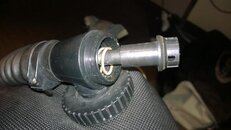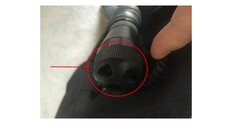For sure, I am an absolute fan of Dive Rite. It's made my diving experience exponentially enjoyable, I just was concerned about this failure point. How many dives did your wife's wing have on it before this happened? Was Dave concerned about it? Or did it seem like it was a no big deal sorta thing?
It was about a year old, maybe 40 dives or so. We got onto a sailboat the following day for a week, and there wasn't much in the way of O-ring availability in the Abacos. I made an O-ring out of rescue tape one afternoon after a few cocktails and it worked fine, so a simple fix.
Dive Rite (can't remember who I talked to) said the caps are usually on really tight and a wrench is needed to remove. Maybe they thought the caps were getting over tightened and backed off a bit
I definitely agree Dive Rite gear has made diving exponentially more enjoyable, for both my wife and me. She couldn't care less about dive equipment, but will rave on about how great her Dive Rite gear is
...Pull dump- too many failure points. If that diaphragm at the back gets a nick in it, or you are going through a silty situation or it gets sand in there and doesn't seal properly, then you have a leak the whole time of both incoming water and outgoing air. Bad news bears.
Technically yes, the elbow can crack, but there is a lot less plastic, and the plastic is a lot thicker so it is less likely to crack given the same forces.
The convenience factor is negated when you learn to dump your wing properly which is when people realize they don't need to pick the damn thing over their head. Also puts a lot less strain on your wing since you aren't yanking on it to dump.
The Dive Rite web site for their wings says "Comes equipped with choice of 16-inch or 12-inch elbow or 16-inch rapid exhaust (pull dump) ...". If I was in to technical diving, I would eliminate failure points, but I'm a recreational diver, so I just check the cap for tightness periodically and enjoy the convenience as a conscientious tradeoff I make






